
The Gathering Spot (TGS) is a private membership community with physical venues ³³ and the largest Black-owned community in the United States. Founded by Ryan Wilson and his college roommate TK Petersen, The Gathering Spot has evolved from a single Atlanta location to a nationwide network of clubs in Atlanta, Washington D.C., and Los Angeles, plus online membership communities in New York, Chicago, Detroit, Houston, and Charlotte ⁵⁰.
Their underlying thesis is simple: "People connect through experiences, they connect through dining, and they connect over work" ⁴. So every Gathering Spot location features three core components: an event space, a restaurant and bar, and a workspace ¹⁰.
With over 12,000 members across the U.S., it’s clearly working for them 2.
What makes The Gathering Spot unique is its intentional focus on celebrating Black culture and community while welcoming everyone ⁴⁵. As Ryan puts it, "I think that it's important to identify the difference between being celebrated in a space and being tolerated in it. And so here at The Gathering Spot, we're really intentional about making sure that Black folks" feel celebrated ⁷. This philosophy has attracted a remarkably diverse membership—the youngest member is 21, the oldest is 92, and 60% of members are women ³.
The business has grown substantially, too. They’ve raised over $30 million in funding ⁴² and employ ~200 people ⁹, hosting hundreds of events each year ⁴.
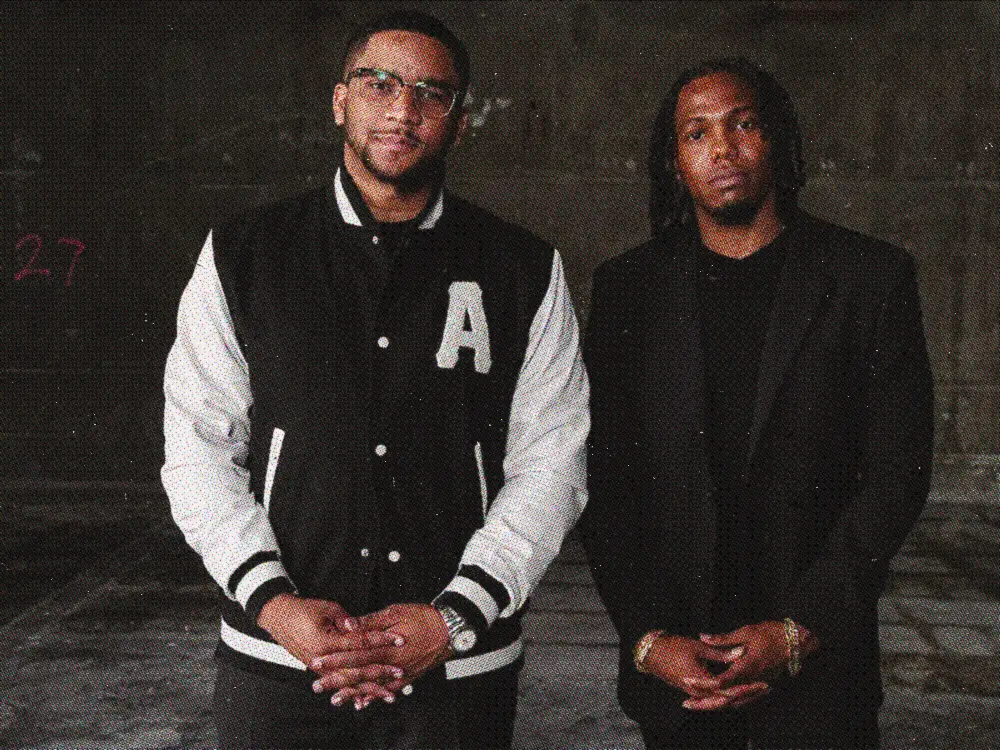
Ryan Wilson never planned to be an entrepreneur. Growing up with entrepreneurial parents who ran a company that grew from 2 people to thousands,³⁵ he had set his sights on becoming an attorney. "I was one of those kids that if you would have asked me at age 5 or 15, I would have told you I wanted to be a lawyer," says Ryan ⁵. He followed that path diligently, attending Georgetown University for both his undergraduate degree and law school ⁵⁷.
Then, in the summer of 2013, as the nation reeled from George Zimmerman's acquittal in the Trayvon Martin case, Ryan got an email with a simple subject line: "What are we going to do?"¹ His response: "We need a physical place to have this conversation" ².
This moment of social injustice became the catalyst for what would become The Gathering Spot ⁴¹. Within days, Ryan reached out to his Georgetown roommate, TK Petersen, who had a background in finance and accounting, with a rough outline of his idea ¹⁵.
"It wasn't honestly even a well-written paragraph," Ryan admits. "It was like, 'hey, I got an idea. We should have a place'" ¹. Petersen helped build a financial model, and the two began meeting regularly to develop the concept ¹², working from 8 at night until 1 in the morning," Ryan explains. Ryan made the bold decision to decline his job offer and pursue this community idea full-time ⁴³, but they got off to a rough start.
Fundraising proved to be even more challenging than expected. What began as a $1 million target quickly grew to $2 million, then $3 million as they learned more about the costs involved ¹⁶. When he asked his Dad for advice about what to do about the growing costs, his Dad said: "Small ideas will keep you small. You have to fight for the best possible version of your idea" ¹. So they remained committed to their vision, but rejection became familiar.
"It was 97 straight nos. I counted," says Ryan ⁵. The rejections weren't gentle either—many were harsh dismissals of their concept. One potential investor told them they couldn't imagine people dining, attending events, and working in the same space ³. They took these dismissals as validation that they were seeing a market opportunity others couldn't. "If you're doing something that's disruptive, people almost by definition shouldn't understand what you're talking about," says Ryan ²⁴. They refined their pitch, particularly focusing on how investors would make money—an aspect Ryan admits he initially overlooked in favor of talking about his passion for the concept ².
They knew they needed the perfect venue. When researching potential locations, "I would go around and get in taxis,” says Ryan ¹⁸:
“The folks that had the most game on what was happening in the city were the folks that were driving around it."
After securing their first round of funding—over $3 million ³⁵—they chose Atlanta as their launch city. It’s "the best place to be a Black entrepreneur in the country," says Ryan ¹. The Gathering Spot finally opened its doors in 2016 with 128 founding members ². Initially, things were tough. They had all their capital tied up in the venue, which meant sometimes they came within days of not being able to make payroll. But they've been profitable from the start and have never lost money.
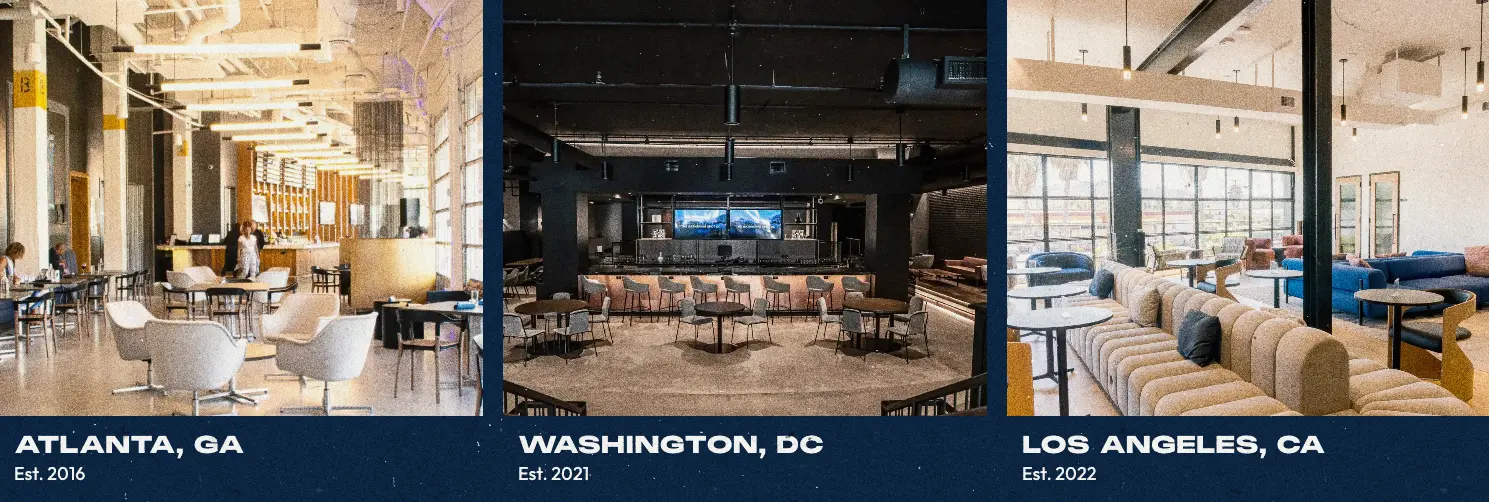
"We're forever grateful to the founding members of the club… because they bet on two guys and a concept way before there was any proof in the pudding,” says Ryan. “We had people who signed up in 2015 to become members just because they met us or they saw a post on Instagram and they just liked the concept," Petersen explains ³.
The Gathering Spot's business model revolves around membership dues as well as revenue from its physical venues: an event space, restaurant and bar, and workspace ¹⁰. "I look at every physical aspect of the club as a tool,” says Ryan. The venues are “not the business," ⁴ the real business is the community itself ¹⁷.
When members join The Gathering Spot, they get physical amenities, curated programming, influential connections, and a sense of belonging. Here’s how it breaks down:
Physical Spaces and Amenities
The Atlanta location spans 25,000 square feet, with similar footprints for the D.C. and Los Angeles clubs ⁶. These spaces are intentionally designed to accommodate "anything you would need to do in a modern day's worth of work" ⁶. For instance, each Gathering Spot has an events space, which they use to host everything from intimate dinners to large-scale conferences. The restaurant and bar areas provide complimentary meals and socializing opportunities, while the workspace areas include individual workstations, private offices, and conference rooms ³⁹.
Plus, it’s venue facilities continue to evolve. They're set to open a new location in Houston, Texas. Plus, in July, 2025, The Gathering Spot opened an expansion in Atlanta, with a new venue on the rooftop of The Interlock. It’s a 60,000-square-foot location that includes a former WeWork space described as a "rooftop retreat,” which sees them expanding into relaxation and wellness experiences.
Programming and Events
The Gathering Spot has hosted over 8,000 events in its first six years of operation, ranging from intimate networking mixers to large-scale conferences and cultural celebrations ². These events create regular touchpoints for members to connect.
Programming spans professional development, cultural experiences, and social gatherings. Events often feature notable speakers and performers, including political figures like former President Biden, Kamala Harris, Cory Booker, and Stacey Abrams ³⁹. As well as cultural figures, like Tyler Perry, T.I., Djimon Hounsou, LeBron James, Cardi B, Mary J. Blige, Ludacris, and Janelle Monáe. These high-profile appearances reflect The Gathering Spot's role as a hub for both culture and civic engagement ⁷.
Beyond celebrity appearances, The Gathering Spot's programming includes practical workshops, panel discussions, and networking events designed to foster professional growth and collaboration ³.
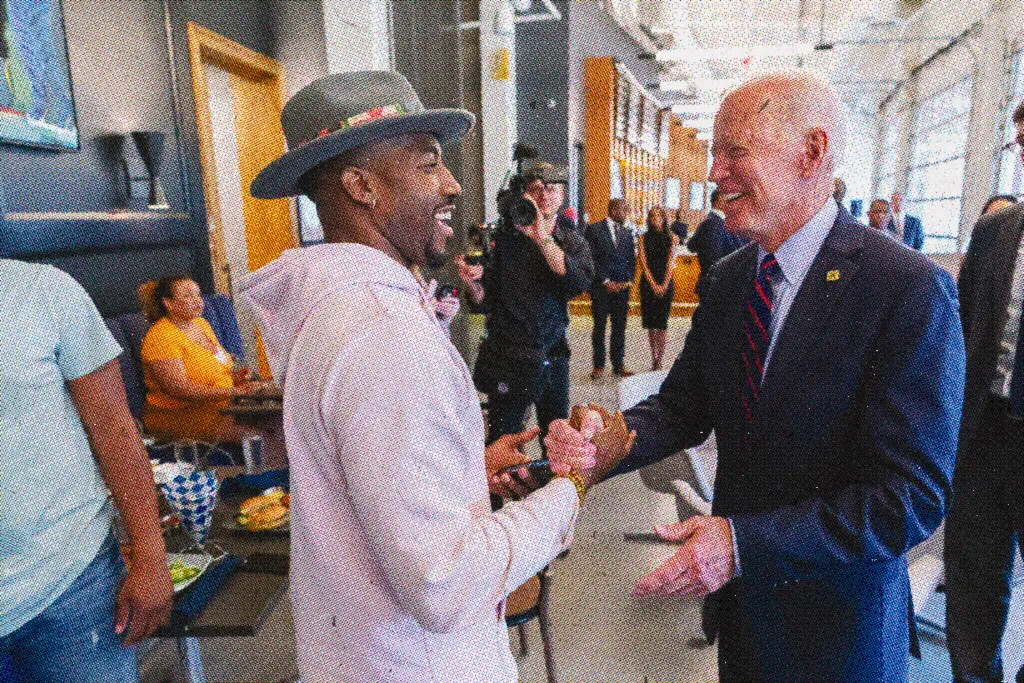
Guest Privileges and Connected Cities
Members can bring up to three guests without advance notice, allowing them to share The Gathering Spot experience with friends, colleagues, and potential collaborators ⁶. This guest policy helps organic growth, giving new potential members a taste of things.
The Gathering Spot also runs an online community, which it calls "connected cities"—locations where they build membership communities before establishing physical clubs ³¹. These connected cities provide value to members beyond their home location. Members have access to programming and community in New York, Chicago, Detroit, Houston, and Charlotte.
Rather than rushing to open locations everywhere, The Gathering Spot has been deliberate about where and how they expand ¹⁹.
"We don't really go anywhere... We try to join the communities that TGS is in," Ryan explains. "We can't just show up and drop a Gathering Spot. We have to build relationships " ⁸.
Their connected cities model is a great way to de-risk building physical locations by building community first. So they can test markets, develop local leadership, and ensure demand before making a big investment ²⁸. When they opened their D.C. and LA venues, each had over a thousand members on the day they opened 2.

Community and Connection
The most valuable aspect of membership, though, is access to a community of diverse professionals, entrepreneurs, and creatives. The membership interview process ensures that everyone who joins brings something unique to the community while sharing core values ²⁵. This curation helps to create an environment where connections feel authentic rather than transactional.
Digital Experience
While The Gathering Spot initially emphasized in-person connections—even delaying the launch of their app to encourage face-to-face networking ⁸—they've since developed a robust digital experience that complements the physical spaces.
Members have access to a mobile app that facilitates connections with other members, provides information about upcoming events, and integrates with other experiences ⁵¹. The platform continues to evolve with features including AI-powered member matching ⁸.
Its app is powered by the community software platform, PeopleVine, which has developed similar apps for other exclusive clubs including Club 1902, Franklin Social, and Casa Cruz. Functionality includes:
The Gathering Spot’s multifaceted approach to member value has contributed to its remarkable growth and retention, even during challenging periods like the pandemic ⁴. During COVID, The Gathering Spot retained a massive 98% of its membership ⁴, even though members couldn’t use the physical spaces. Members see value in being a member, not just in getting access to its facilities ²⁶.
This approach also means they've multiple revenue streams. While membership fees are its largest source of income, they also make money through event hosting and ticket sales, corporate partnerships (they've hosted events for companies like Delta, Netflix, and Google), food and beverage sales, as well as venue hire.
Membership at The Gathering Spot costs $200 per month or $2,100 annually,⁵⁴ but with a discounted price for those under 30 ($100 per month). The tier with Retreat access is $3,100 per year. Getting in isn't just about ability to pay—prospective members go through an interview process where the team evaluates whether they'll contribute positively to the community.²⁵
"We interview everybody," says Ryan. "It's really important for us to get to know every single member of the community to make those connections" ³. A key question in these interviews is: "What animates you outside of the office?" ³. This focus on personal passions rather than just professional credentials helps create a more holistic community ²⁰.
"If you're one of those people that likes to walk in rooms and just pass out your business card and not say anything, and the interaction is really transactional, you're probably not a good fit for TGS," says Ryan ³.
This selective approach has created a community where members form genuine connections that often evolve into business partnerships, friendships, and even marriages. "Since TGS opened and there's so many business partners and relationships. We even have TGS babies where people are like, 'I met at TGS, and now look at us.'" ³
Sixty percent of members are women, a stat Ryan is proud of. "Not only are we trying to emphasize the experience of Black people, but particularly Black women. If you're going to disrupt the traditional idea of a country club, our idea was that you needed to do that with folks that traditionally hadn't been invited into that experience" ⁷.
In connected cities like New York, Chicago, Detroit, Houston, and Charlotte, members pay dues and receive value through programming and events held in various locations throughout each city.¹⁹ "We just have activities that bring the community together on a regular basis," says Ryan¹. In New York, for example, they've hosted events in every borough ¹. Online members pay $1,000 per year, and can visit venues for a small fee. They also offer an out-of-town plan, which is $300 per year and $25 per visit for those living outside of their served cities.
Its pricing model differs from that of a lot of private clubs that set eye-watering high prices to make it exclusive. TGS is looking to be "the most inclusive club in the country" ⁸. This commitment to inclusivity is driven by a desire to address broader societal issues, particularly the wealth gap. "If there's a seat at our table that's available, what we're committing to in this next season is figuring out how we're going to intentionally fill that seat with someone that needs to be a part of the conversation," says Ryan ⁸.

Managing a community of over 12,000 members across multiple cities is a big undertaking ²⁸. The Gathering Spot currently employs approximately 200 people across its locations and connected cities ⁹. From the beginning, Ryan and TK recognized they needed expertise they didn't possess, particularly in areas like food and beverage operations. "I'd never been in the restaurant business before,” so they hired experts. “The guy that was working with us, it was his 42nd restaurant," says Ryan ¹.
Technology has been another key investment for running The Gathering Spot. Although, initially this was underplayed to encourage in-person connections—"We actually had the app that we have now, it was hot back then in 2017, but we didn't release it for a while… to make sure that folks came here and did the old school thing and met one another" ⁸. Now they have that, they see technology as essential to scaling the community ²¹.
In late 2023, Ryan announced plans for a new app with enhanced features for member connections, location-specific information, and integration with other experiences ⁸. The company is also developing AI tools to facilitate connections between members with complementary needs and expertise ⁵⁶.
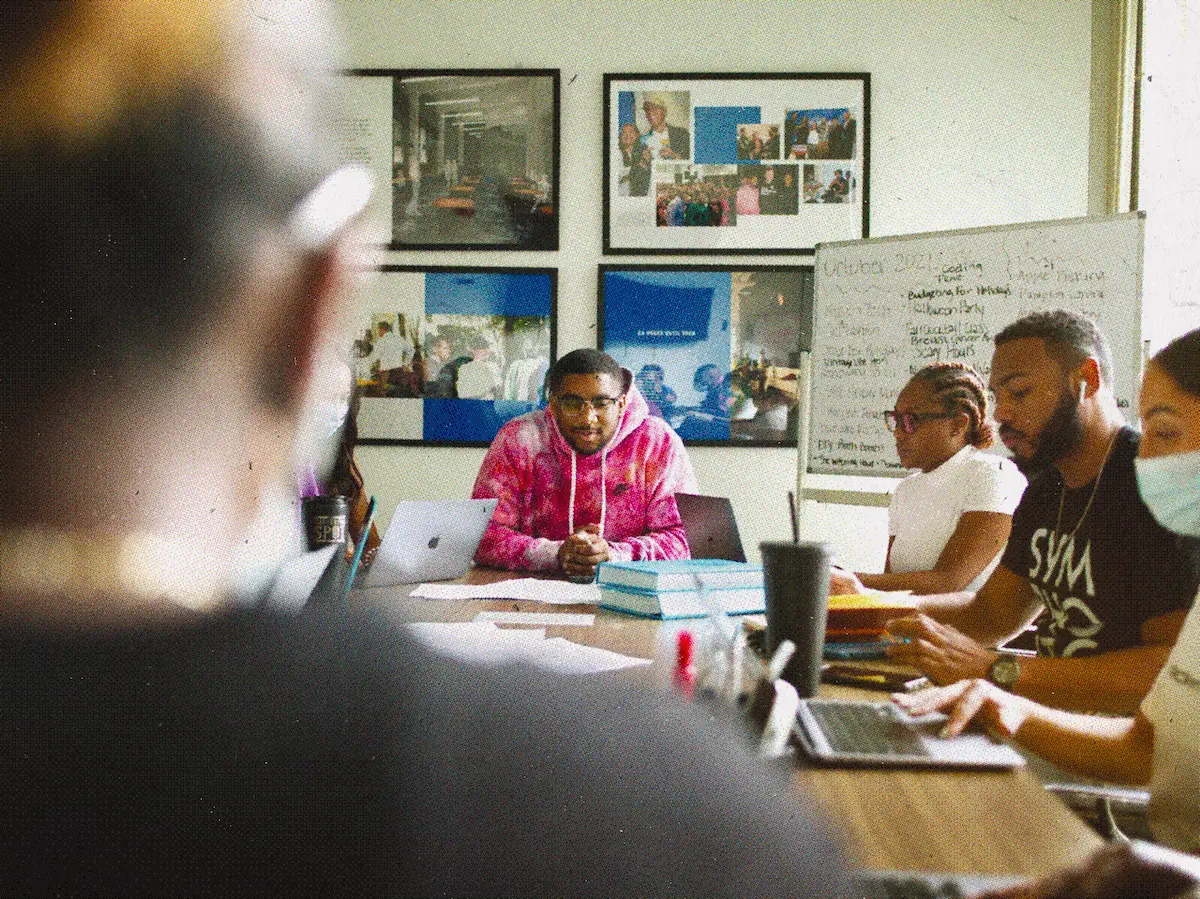
One of the biggest challenges The Gathering Spot faced came in 2022 when it was acquired by Greenwood, a digital banking platform focused on Black and Latino communities ³⁷. While the acquisition initially seemed like a great merger, described as "black on black M&A... in a positive way,"³ tensions emerged in 2023 when TK was unexpectedly fired, supposedly as part of a larger reduction in force at Greenwood ³². Then things got messy, quickly. A lawsuit was filed by Ryan and TK citing financial issues resulting from the acquisition. Greenwood responded with their own lawsuit.
The community's response to these developments was strong. More than 3,000 members cancelled their memberships between July and September, around a quarter of TGS’s customer base at the time.
Throughout this challenging period, though, Ryan and TK maintained transparent communication with their community, holding town halls and acknowledging members' concerns ²⁶. "We never lost sight of the fact that like y'all's names are on the walls of this place," Ryan told members. "We know who really runs this thing, and it's always been the community" ⁹.
The Gathering Spot (TGS) and Greenwood quickly reached a settlement in July 2023. By December, TGS announced it had split from Greenwood, with Ryan and TK reacquiring majority ownership and making the company independent once again.
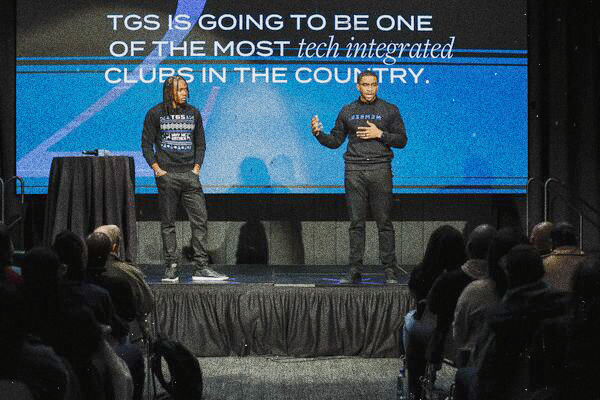
Beyond managing the member experience, The Gathering Spot has developed significant community service initiatives.²⁷ These include food service programs providing daily meals across Atlanta, literacy initiatives, and policy-driven work to address community issues ⁴. One particularly impactful program emerged unexpectedly ⁴:
"We went into a conversation expecting to talk about literacy efforts. And what we heard was our kids can't think about reading because the last meal that they'll have is lunch. And so the decision that we made and that we've been making for now four years was that we were going to stand in that gap."
The advocacy component is "core to who we are," says Ryan ³⁹. In Atlanta, members worked to help Georgia turn blue in elections, hosted virtual events with voting rights groups, mobilized voters, and provided supplies at long poll lines ³⁹. During COVID, they created the TGS Lifestyle Box, a package of Black-owned products with proceeds going back to the makers. In June 2020, they asked members to participate in the 'Power of 30 Challenge' by spending $30 at a Black-owned business. That initiative alone generated $450,000 in one weekend.
Most recently, in August 2025, The Gathering Spot launched the "Safe House" initiative at its Washington D.C. location. In response to political tensions and federal deployment to the capital, they opened the D.C. facility to non-members as a sanctuary space, and required extra vetting to maintain security.
This commitment to social impact is a part of its brand and attracts members who want their professional community to align with their values. It has also earned them a great deal of press coverage. While word of mouth has been their main growth channel, this has been bolstered by frequent local media news slots on TV and in the press.
The Gathering Spot's revenues are now "well into eight figures" annually, growing by 541% from its first year in 2016 to 2024. They also recently announced funding of $30M, all from angel investors. They included T.I. and Cam Newton, rapper Big Sean, NBA stars Charles Barkley and Baron Davis, and the producer Tricky Stewart. Its growth and expansion is set to continue.
So there you have it - that’s how Ryan, TK, and team built The Gathering Spot into a million-dollar community ✌️
Purpose creates authenticity
The Gathering Spot began with a clear purpose beyond profit—creating a space where important conversations could happen and people could connect meaningfully. This purpose-driven foundation has guided their decisions and attracted members who share these values. Starting with a clear "why" that resonates with prospective members draws people in.
Physical community can be a catalyst
Most communities exist entirely online, but The Gathering Spot shows how powerful in-person community can be in fostering connection. Think how you can get members physically together to develop deeper connections.
Drive growth with tiered access
The Gathering Spot balances the tension between exclusivity and inclusivity well. They've eschewed the elitism of traditional private clubs by maintaining relatively accessible pricing. So consider how you can offer different access tiers to enable multiple member types. For some ideas of different pricing models, take a look at the Paid Community Decoded report.